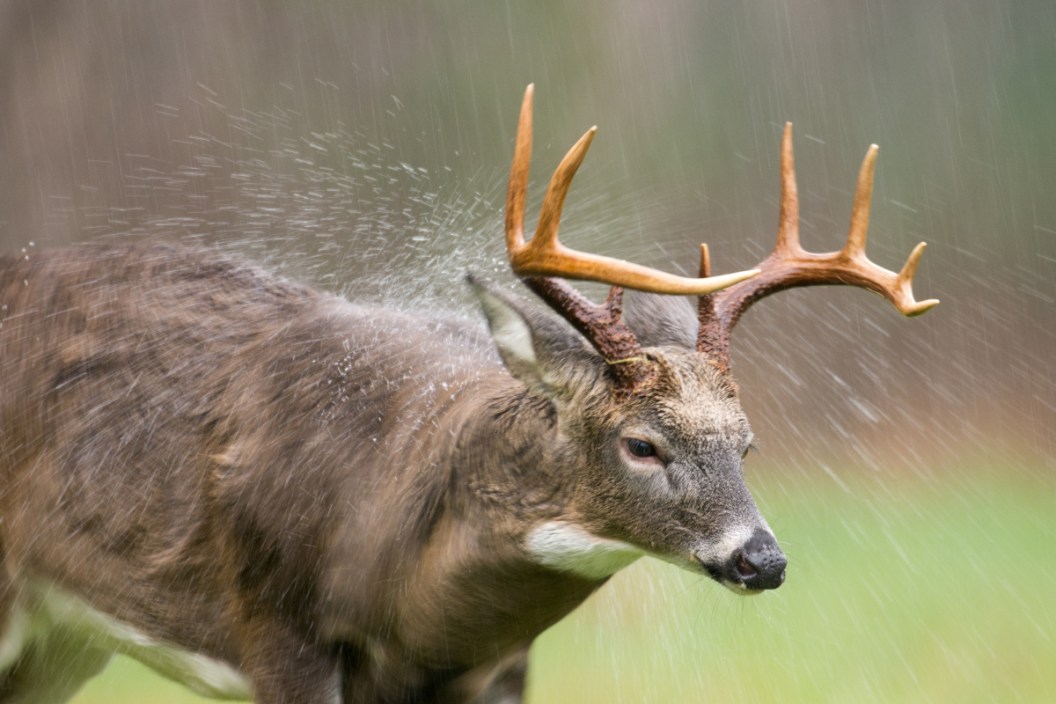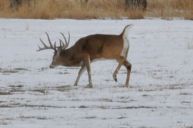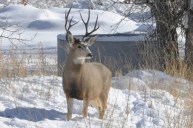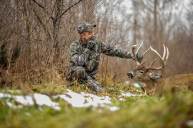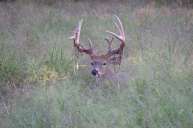Almost every hunter I know groans when they look out the window and see it's a rainy day. And who can blame them? No one likes sitting all day in a blind or treestand getting soaked to the bone while waiting for the big bucks to arrive. Hunting whitetails during a downpour can be a truly miserable experience. It doesn't help that many hunters who have given it a try have become discouraged after failing to see any deer.
However, before you throw in the towel and head back to bed after waking up on a rainy morning, just know there are options. In fact, the best hunters know how successful deer hunting strategies can be formed around inclement weather. We won't lie, it's not easy. As the old saying goes though, you can't kill one sitting in bed or on your couch! Today we'll take a close look at how rainy weather affects deer hunting and some hunting tips on how you can use that information to your advantage this season when precipitation is in the forecast.
Gear Considerations
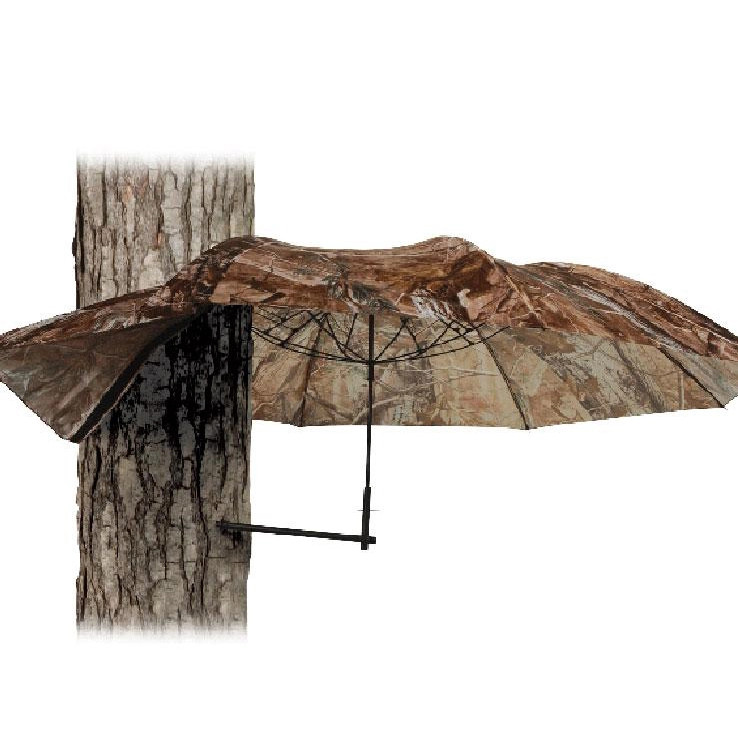
Sportsman's Warehouse
Before we get into the strategies of hunting bad weather, you need to take serious stock of your equipment, especially the clothing you plan to wear. This is an important step many hunters neglect when heading out in the rain. If you're miserable, you won't be focused and if you're not focused, it could cost you a chance at a deer silently slinking through the woods past your stand. We highly recommend investing in some quality rain gear if you frequently find yourself faced with rainy conditions. If you're wearing your regular gear, you'll get wet fast. And once you get wet, you'll get cold, and once you're cold, it quits being fun when all you want to do is head back to the house.
Of course, you can also restrict your rainy day hunts to sits inside a box or tent blind that protects you completely from the elements. I'll admit, this has been my preferred way to stick out a good rain in the deer woods in the past. The bonus of doing this is that the blind structure will also protect your archery gear or firearm from the elements. If you plan to sit out in rain or even snow for extended periods of time, it's worth looking into firearms that feature stainless steel or Cerakote coated components. These guns are a little more expensive, but they will also not corrode or rust as easily when exposed to damp conditions.
If a blind isn't an option, and you don't want to purchase another set of clothing just for rain, consider getting a hunter's umbrella that can be attached to the tree. These products are surprisingly cheap, and I've used them to sit all day in a heavy rain. They're not perfect, but it is preferable to being exposed to the elements the whole time. No matter what solution you choose, make sure to thoroughly wipe down your bow or firearm after a wet day afield. Never put these items away wet.
How Rain Affects Deer Movement
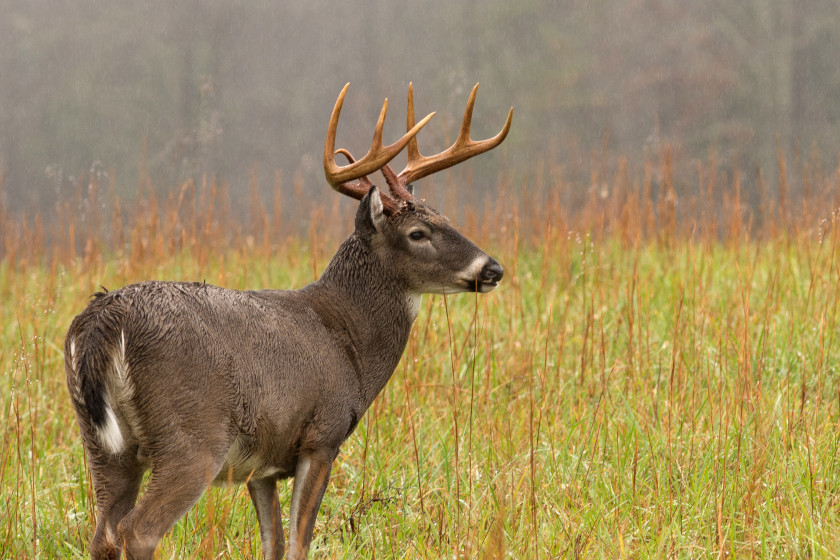
Getty Images: EEL_Tony
It's no secret that weather conditions affect whitetail deer activity in a variety of ways. It's usually the extreme ends of the weather spectrum that are going to cause the most problems for hunters. Most hunters already know deer move less during extreme high winds, extreme cold or unusually warm weather. Likewise, a torrential downpour is usually not going to be a good time to hunt. If that's the forecast, you're probably safe going to work or staying at home.
Ultimately, your decision to hunt or not should hinge on the type of rain drops you're experiencing. A light rain, especially a misty one, seems to spur deer movement to some degree. Hunter opinions seem to be split as to why this happens. It seems likely that deer burn through more energy during a rain. This is probably why they seem compelled to hit food sources during misty weather. It may also be easier for the deer to feed and digest wet vegetation than dry.
Whatever the case may be, deer movement does happen in lighter rain, which is why you shouldn't abandon your stand the second a light drizzle starts. Especially if it's the rut, those big mature bucks aren't going to stop chasing does unless the weather takes a dramatic turn for the worst.
One thing most hunters agree upon is that timing is everything when it comes to rain. Watch your local weather forecasts closely. Look at the hourly forecast and watch the radar. Look for breaks in the weather where precipitation starts.
If you can find a midday break in the weather, you should get on stand while the rain is still falling. Once that weather lets up, the deer will be up and on their feet. A good rain can spur deer activity when things have otherwise been at a lull. If you have a day with intermittent rain, it may pay to stay on stand all day. This is how many of the most dedicated bowhunters find success year after year when their buddies are hiding inside from the storm.
Where to Focus Your Efforts

Getty Images: EEL_Tony
So, what is the best place for hunting whitetail deer in the rain? Well, thankfully, precipitation helps simplify things a bit. When the rain is heavy, the deer will most likely be holed up in their bedding areas. Position yourself either directly on food plots or the transition areas between bedding and feeding for your best chance of ambushing a big buck.
As we mentioned earlier, check the weather forecasts for a break in the precipitation. This is an ideal time to hunt a funnel or pinch point between bedding and feeding. If a buck is bedded down with a doe during a heavy rain in the rut, once it lets up, she's likely to get the urge to feed. When she does, that buck isn't going to let her out of his sight. With a little luck, she'll pull him straight into your shooting lane. Focusing on rain and the breaks in the weather can be such a solid strategy for bowhunters. Deer that have previously been unpredictable start making mistakes as they respond to the changing weather conditions.
It's not just after a rainstorm you should focus your efforts on feeding areas. If a large storm is approaching, the deer will often anticipate it and start feeding. Again, we stress the importance of analyzing the weather forecasts by the hour to determine the best times to be on stand.
Other Rain Factors

Getty Images: EEl_Tony
Hunting in the rain brings about some other obvious benefits besides predictable deer movements. Rain washes away scent molecules almost immediately, this makes it harder for deer and other big game to wind you. This is especially important in bowhunting when you need to get in close. You may be able to get away with stand positions that may not work under normal, dry conditions.
The other big benefit is with sound. Wet leaves can't crunch and give away your position, making it easier to get to and from your stand or blind without being noticed. The sound of the drops hitting also helps act as a mask for your movements. It also makes a rainy day the perfect time for a spot and stalk style hunt.
Of course, this also means that the rain makes it harder for you to hear the deer coming. Stay focused and keep scanning the environment around you for the slightest movements. Trust us, we've learned from our mistakes in the past. We have been surprised more than once by deer that we never heard because of the rain. Don't be caught off guard, it could cost you the chance at the buck of a lifetime.
The last thing to consider is blood trails. Shooting a deer in the rain brings an extra challenge in the recovery unless you watch the animal fall. This will usually be more of a concern for bowhunters since the animals don't always drop within sight. Watch the animal closely when take the shot. Note how it reacts and try to determine what kind of hit you made. That will help determine how quickly you can follow up before the trail gets washed away. Pick a notable landmark at the last spot you saw the deer in case you must rely on other cues to track it.
Consider your shot placement in the rain, especially if using archery equipment. Shooting for the lungs will usually produce a heavier blood trail that won't wash away as fast. Make sure your broadheads are sharpened and up for the task. Sharp broadheads lead to shorter recoveries, which is what you want in rainy conditions. If you are using a firearm and are concerned about trailing, consider a high shoulder shot to crumple the deer in its tracks and avoid the track job completely.
The next time the sky becomes overcast and the barometric pressure starts to drop this season, don't get discouraged. In truth, a good rain can be just the thing to turn an ordinary deer hunt into an extraordinary one in a hurry. The hunters who learn to adapt to the rain and stick out the changing weather are often some of the most successful ones out there. Remember that you can't shoot a deer while at work or sitting inside watching TV. Get into the woods and hunt the rain this season. You may be surprised by the results.
For more outdoor content from Travis Smola, be sure to follow him on Twitter and Instagram For original videos, check out his Geocaching and Outdoors with Travis YouTube channels.
